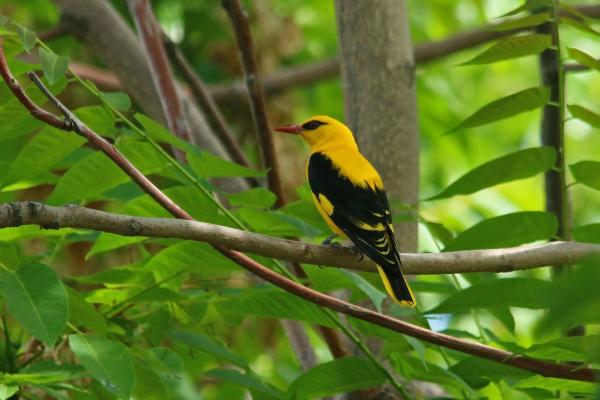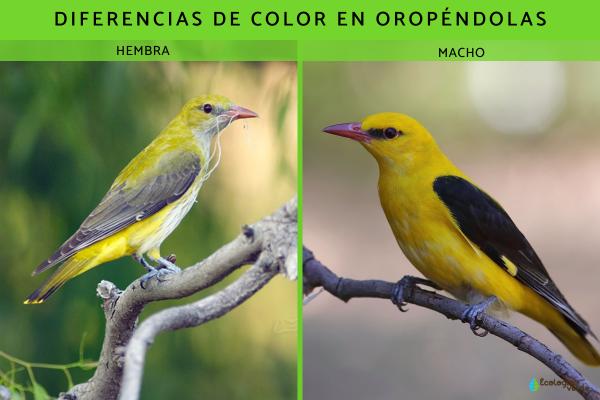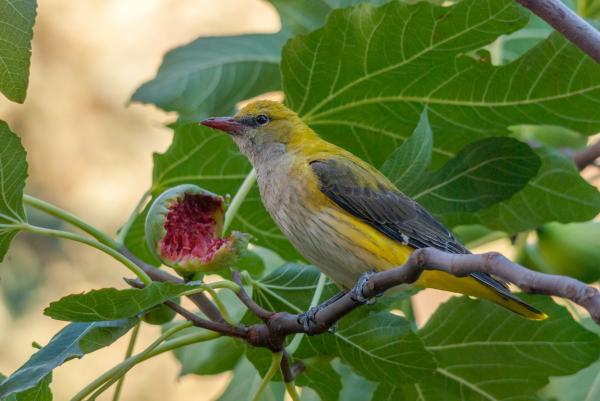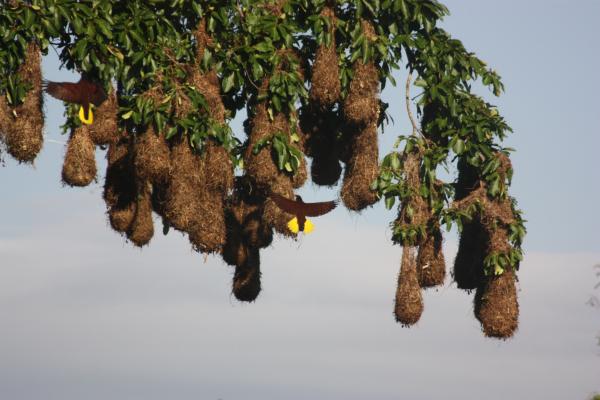Birdwatching is a popular activity enjoyed by many enthusiasts due to the beauty and diversity of birds. Among the most special and sought-after species is the Eurasian Golden Oriole (Oriolus oriolus), known for its striking yellow plumage and elusive nature. Commonly seen during spring in the Iberian Peninsula, this bird captivates birders with its unique appearance and melodious song. In this article from, we explore the characteristics, habitat, diet, and breeding behavior of the Eurasian Golden Oriole.

The Eurasian Golden Oriole, also called the Euro-Asian Oriole, boasts bright yellow feathers, earning its name "oriole," which means “golden bird” in Latin and Spanish. Notable features include:
Colorful Plumage: A distinctive black mask around the eyes makes them appear larger. Wings and tail feathers are predominantly black with minor sexual differences. The beak is a dark pink shade.
Sexual Dimorphism: Males are more vividly colored with yellow primary wing feathers, while females show olive tones with grayish underparts and brown wings and tail. Juveniles resemble females and have black spots on the chest that fade with age. These color differences assist in determining age and sex.
Molting Patterns: Undergo post-nuptial, post-juvenile, and pre-nuptial molts, useful for assessing developmental stages.
Elusive Behavior: Due to their shy nature, sightings are rare, but their vibrant yellow and black contrast is unmistakable against green foliage. Their flight alternates between folded wings and flapping, creating a wavy motion.
Medium Size: Length ranges between 22–25 cm.
Territorial and Aggressive: Known to defend their territory vigorously, often confronting other birds.
Unique Song: The male’s flute-like song echoes far, accompanied by a harsh sound. Females sing at a higher pitch but with shorter duration.
Social Species: Estimated population between 17 and 32 million, stable and not currently endangered.
Hanging Nests: Construct pendulous nests that hang from tree branches, differing from most other birds that build nests on branches.
This migratory bird breeds across Europe and Western Asia during summer and migrates to tropical Africa and Asia in winter. It prefers habitats such as:
Moist Mediterranean forests
Deciduous woodlands
Riparian floodplain forests
Thickets and shrubby areas
They also thrive in human-modified habitats like gardens, cork oak and oak forests, and orchards, avoiding deforested zones and favoring mixed dense vegetation with open fields.

Eurasian Golden Orioles primarily feed on invertebrates and insects, including caterpillars, crickets, flies, spiders, beetles, mollusks, and butterflies. They forage by gleaning prey from tree leaves. Their diet is supplemented with sugary wild fruits such as blackberries and cherries, which provide essential energy during migration.

Breeding begins in spring (April to May). Males arrive first to establish territory, followed by females for courtship and pairing. Reproduction involves:
Nest Building: Females build a suspended cup-shaped nest on black poplar (Populus nigra) branches, typically 8 meters above ground near water sources. The nests hang downward, hence the name “oriole” (golden + pendulous).
Mating and Fertilization: After nest completion, mating occurs, resulting in internal fertilization. Orioles are monogamous, often seen foraging and nesting as pairs.
Egg Laying and Incubation: Eggs are laid in June, white with black spots, incubated for about 20 days. The mother cares for hatchlings while both parents forage, mainly feeding them caterpillars and bees found on black poplars. Juveniles fledge after this period.

The Eurasian Golden Oriole’s vibrant plumage, melodious song, and distinctive behavior make it a treasured species among birdwatchers. Protecting their habitat is essential for preserving this remarkable bird’s population and the biodiversity of the ecosystems they inhabit.
Bibliography
Beatty, R., Beer, A., & Deeming, C. (2010). The book of nature. Great Britain: Dorling Kindersley.
Young, D. (1999). "Ophiophagus hannah" Available at: https://animaldiversity.org/accounts/Ophiophagus_hannah/
Featherstone, D. (2021). Why Are Mongooses And Snakes Enemies?. Available at: https://www.forestwildlife.org/why-are-mongooses-and-snakes-enemies/
Global Biodiversity Information Facility (s.f.) Sus scrofa Linnaeus, 1758. Available at: https://www.gbif.org/species/113274582
animal tags:
We created this article in conjunction with AI technology, then made sure it was fact-checked and edited by a Animals Top editor.